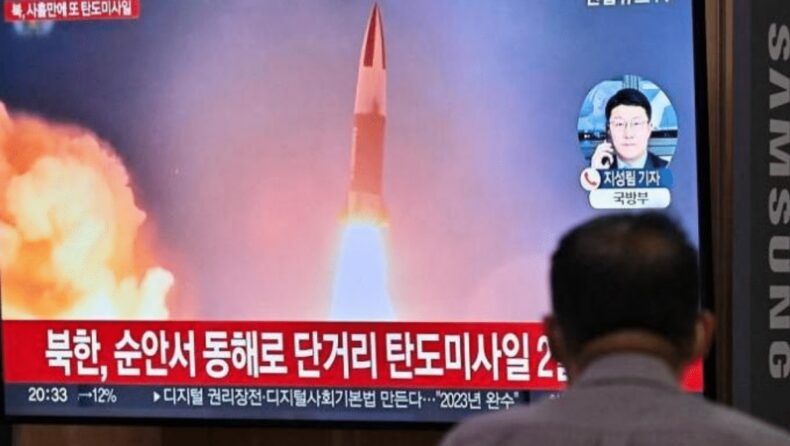On October 4, nuclear-armed North Korea fired a ballistic missile over Japan for the first time in five years, prompting a warning for residents to take cover and a temporary suspension of train service in northern Japan
The missile appeared to have flown over and past Japanese territory before crashing into the Pacific Ocean, prompting the Japanese government to issue a warning to residents to seek cover.
The Japanese government advised citizens to take cover as the missile appeared to have flown over and past its territory before falling into the Pacific Ocean.
It had travelled the farthest of any North Korean missile ever and ascended to a height of roughly 1,000 kilometres, surpassing the International Space Station.
The missile looked to have flown over and past Japanese land before crashing into the Pacific Ocean, prompting the Japanese government to issue a warning to its inhabitants to seek cover.
The missile, which was the first launched from North Korea since 2017 to travel over or through Japan, was said to have been destroyed without the employment of any defensive systems.
In contrast to North Korean test flights, which are typically “lofted” higher into space to avoid flying over neighboring countries, this was the first North Korean missile to follow such a trajectory since 2017.
Tokyo also claimed that its 4,600 km (2,850 miles) range may have been the longest ever for a North Korean test flight.
The most recent launch was Pyongyang‘s fifth in ten days, occurring as the US, South Korea, and Japan all flexed their military might.
The three nations engaged in trilateral anti-submarine exercises last week, which included a U.S. aircraft carrier that made its first visit to South Korea since 2017.
Washington’s reaction to recent tests has been relatively subdued as it concentrates on the conflict in Ukraine and other domestic and international concerns, but the U.S. military has increased its show of force in the area.
According to Tokyo, no efforts were made to shoot the missile down. Yasukazu Hamada, Japan’s defence minister, stated that the country will not rule out any alternatives, including the use of counterattack capabilities, as it works to bolster its defences against North Korea’s frequent missile launches.
South Korea also declared that it would strengthen its armed forces and broaden its cooperation with allies.
Hirokazu Matsuno, Japan’s top government spokesperson, stated at a news conference that “North Korea’s series of actions, including its repeated ballistic missile launches, threatens the peace and security of Japan, the region, and the international community and poses a serious challenge to the entire international community, including Japan.”
The missile, according to Tokyo and Seoul officials, travelled between 4,500 and 4,600 kilometres (2,850 miles), reaching a maximum altitude of roughly 1,000 kilometres.
The Joint Chiefs of Staff of South Korea (JCS) reported that it looked to have been an IRBM launched from the Jagang Province of North Korea.
Recently, North Korea has conducted several tests from that region, including the firing of numerous missiles it claimed to be “hypersonic.”
East Japan Railway Co. suspended train service in the northern regions as a result of the test, according to Japanese broadcaster NHK. No reports of the missile causing damage to ships or aircraft, according to Matsuno.
The missile travelled between 4,500 and 4,600 kilometres (2,850 miles), according to officials in Seoul and Tokyo, and reached a maximum altitude of around 1,000 kilometres.
According to the Joint Chiefs of Staff of South Korea (JCS), it appeared to have been an IRBM launched from the North Korean province of Jagang. From there, North Korea has recently performed a number of tests, including the firing of many missiles it dubbed “hypersonic.”
According to Japanese broadcaster NHK, East Japan Railway Co. stopped operating trains in the northern regions as a result of the test. There have been no reports of the missile damaging ships or aircraft, said Matsuno.
According to observers, North Korea’s recent spate of missile tests has helped the country operationalize more of its arsenal, build up new capabilities, and convey the message that developing weapons is a sovereign prerogative that the rest of the world should embrace.
Resolutions of the United Nations Security Council, which have put sanctions on the nation, forbid North Korea’s missile and nuclear weapons programmes.












